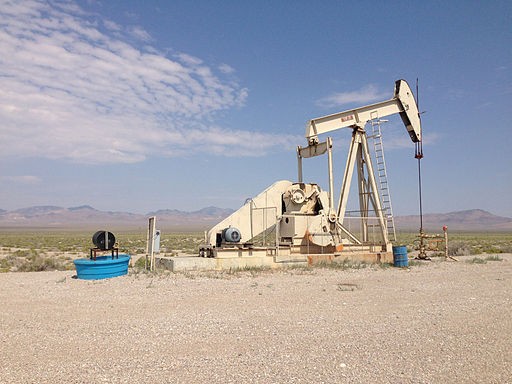Is It Time to Invest in Energy Stocks
Post on: 12 Июнь, 2015 No Comment

Send by mail:
The sharp fall in oil prices has wreaked havoc on shares of energy companies, leaving investors to decide whether now is the time to go bargain hunting.
U.S. crude prices have fallen by more than half since June, trading at a six-year low of around $45 a barrel. For motorists filling up their tanks with sub-$2 gasoline, that has been a cause for celebration. But for investors in the energy sector, it has been a calamity.
The S&P 500 Energy index, comprising the industry’s largest companies, lost more than a fifth of its value over the six months through Thursday, the biggest decline of any of the 10 major sectors, according to FactSet. The broader S&P 500, by contrast, rose 4%.
The pain has been worse for shares of smaller producers, many of which took on loads of debt to finance new drilling. A barometer of small energy companies, the S&P SmallCap 600 Energy index, has swooned 47% in the past six months.
Experts warn that the wild swings in energy stocks could continue for some time. While blue-chip names like Exxon Mobil have offered energy investors some insulation from volatile oil prices, producers and service companies are more vulnerable to the tumult—but have more to gain should oil prices stage a rebound.
Investors essentially have two ways to play the energy market: for stability and income, assuming the oil price stays at current levels or even dips more, and for growth, assuming a price rebound will come sooner rather than later.
Here’s what you need to know.
Income and Stability
Investors thinking about getting into the sector should have a stomach for volatility and an eye for the long run.
Experts agree that oil prices will rise out of their doldrums eventually, but how long until a rebound takes place is a matter of fierce debate. This month, analysts at Bank of America said they expect U.S. oil prices to fall to $32 a barrel by the end of March before climbing to $57 by the end of the year.
You can’t look at the sector and think you’re going to be lucky enough to time the bottom, says Russ Koesterich, chief investment strategist at BlackRock, which manages $4.65 trillion. You have to be thinking about it for the longer term, realizing you may see the stocks down 10% or 15% before they bottom.
The upheaval has sent many pros seeking shelter in integrated oil companies—blue-chip energy firms that control the wells that draw crude from the ground and the refineries that turn it into fuel. They owe their stability to their diverse business mix and rock-solid balance sheets.
Oil production is likely to keep growing, despite the decline in prices, thanks to advances such as hydraulic fracturing, or fracking. Earlier this month, the International Energy Agency said it expects nearly one million barrels a day of extra oil to be pumped around the world in 2015. Global economic growth, meanwhile, remains sluggish, damping growth in demand.
Shares of Exxon Mobil are down just 10% in the past six months. Fellow Dow Jones Industrial Average component Chevron is off 18%—no picnic, but better than many rivals.
They are less of a pure play on oil, Mr. Koesterich says. Relative to the rest of the sector, the correlation between the integrated [companies] and the oil price is much less.
Steady dividends are an added benefit. The oil industry has seen downturns in the past, but neither Exxon nor Chevron, for example, has cut its dividend in decades. In a cash pinch, both would have plenty of room to curb share buybacks first, says Lysle Brinker, director of equity research at consultancy IHS Energy.
The dividend is the only reason, for some investors, why they own these stocks, Mr. Brinker says.
Investors with an appetite for energy stocks, but not for stock-picking, have plenty of options among exchange-traded funds and actively managed mutual funds.
The biggest energy-focused ETF is the $11 billion Energy Select Sector SPDR Fund, which tracks energy companies in the S&P 500. The fund charges annual fees of 0.16%, or $16 per $10,000 invested.
Among mutual funds, the $10.1 billion Vanguard Energy Fund has weathered the downturn in oil prices better than its competitors, according to investment researcher Morningstar.
It has lost 25% in the past six months, compared with a 29% drop among all energy funds. The fund charges annual fees of 0.38%.
The Vanguard fund’s relatively heavy tilt toward integrated energy companies and its lighter weighting of more beaten-down corners of the sector has helped its performance, Morningstar analyst Kevin McDevitt says.
You’re getting the commodity exposure, you’re getting the energy exposure, but you’re not getting all the volatility that comes with it, he says.
Another option: the $3.6 billion T. Rowe Price New Era Fund, which invests in the energy industry as well as miners and other resource producers. It weathered the crude downturn by boosting its holdings of integrated oil companies beginning last summer, Mr. McDevitt says.
Over the past six months, the fund has lost 19%, compared with a 22% slide for the broader category of natural-resources funds. It charges an annual fee of 0.66%.
Master Limited Partnerships
Another popular energy bet for income-hungry investors has been master limited partnerships, the pipeline and storage firms that earn their keep transporting and storing oil and natural gas.
MLPs pay most of their earnings to shareholders, a draw for income-starved buyers. And since they focus on storing and moving products, MLPs are seen as more insulated from turbulent prices.
The Alerian MLP index, a barometer of the industry, yields 6.16%, compared with less than 2% on 10-year government debt. But the index has lost 14% of its value over the past six months, making MLPs far from immune to oil’s tumble.
A lot of people have gone out and said [MLPs] are uncorrelated to oil prices, but that’s simply not true, says Richard Bernstein, head of the $3.4 billion firm Richard Bernstein Advisors in New York.
As long as U.S. energy demand holds up, oil will continue to flow through the pipes and MLPs will remain a good investment, says Simon Lack, founder of investment-advisory SL Advisors in Westfield, N.J. Indeed, fuel demand is on the rise over the past year, according to the Energy Information Administration.
The biggest fear for MLP investors is demand destruction, and we’re in the complete antithesis of that, Mr. Lack says. If anything, lower energy prices are going to result in more demand, not less.
But MLPs could see more pain if their oil-company customers start demanding lower prices, Mr. Bernstein says.
Investors have an array of options when it comes to MLP funds, including the $9.1 billion Alerian MLP ETF. Another popular option: the $5.6 billion JPMorgan Alerian MLP Index exchange-traded note. Both charge annual fees of 0.85%.

Investing for a Rebound
If giant oil companies and MLPs are partly insulated from oil’s tumble, they also are less likely to climb as quickly should crude stage a big rebound, experts say.
With U.S. output still rising and the global economy in low gear, that rally still could be a long way off.
But that doesn’t mean prices will stay under $50 forever. When and if they rebound, exploration-and-production, or E&P, companies will likely be among the first to benefit.
To date, they have been among the hardest hit. A widely tracked gauge of E&P stocks, the S&P 500 Oil & Gas E&P index, has fallen 28% in the past six months.
Nobody is making money at the $45-a-barrel level, says Norman MacDonald, portfolio manager of the $991 million Invesco Energy Fund.
But that means supply has to decline and prices will rebound eventually. It’s a very self-correcting mechanism, he says.
The cost of producing oil varies widely from place to place, even in North America, where wells are newer and production costs typically higher. Among Mr. MacDonald’s biggest holdings are Devon Energy, Canadian Natural Resources and Ultra Petroleum. All are producers concentrated in North America but with relatively lower costs of production.
If oil stays at $55, $60 a barrel, they will survive, he says.
John Dowd, who runs the $2 billion Fidelity Select Energy Portfolio, says he is paying closer attention to the quality of the underlying company assets when deciding when to buy, instead of focusing on traditional valuation metrics such as price/earnings ratios—in large part because both prices and earnings are in such upheaval, he says.
You want to buy an energy stock when the outlook is dark and dreary, and right now it’s pouring, he says.
One temptation investors should avoid, experts say, is betting on the price of oil directly, which can be done via oil futures contracts or ETFs that invest in them, such as the $1.4 billion United States Oil Fund, which charges annual expenses of 0.76%.
The concern: Oil-futures contracts expire monthly, requiring investors to roll into the subsequent month’s contract on a regular basis. This process can take a big bite out of returns when the longer-term contract is more expensive than the expiring contract, as is the case now.
At current prices, that penalty amounts to a 12% erosion of annual returns, according to John Gabriel, a strategist at Morningstar.
For an individual investor, I would never really recommend getting involved with the commodity itself, because it’s kind of the Wild West, says David Kelly, chief global strategist at J.P. Morgan Asset Management.
Playing the Field
An E&P-heavy bet can be played with the $1.4 billion SPDR S&P Oil & Gas Exploration & Production ETF, which charges an annual fee of 0.35%. Another option is the $445 million iShares U.S. Oil & Gas Exploration & Production ETF, which levies a 0.43% annual charge.
(MORE TO FOLLOW) Dow Jones Newswires














